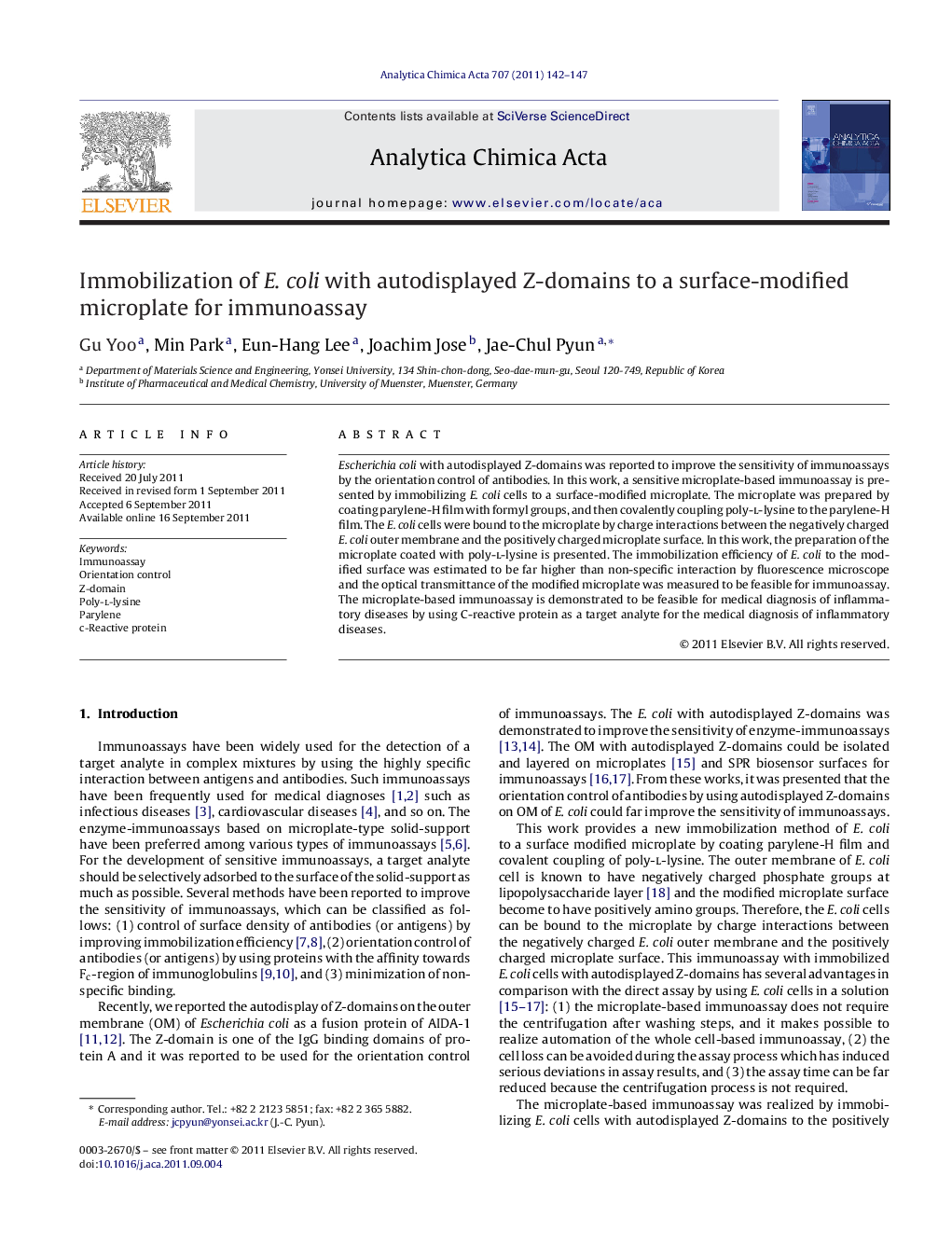| Article ID | Journal | Published Year | Pages | File Type |
|---|---|---|---|---|
| 1166534 | Analytica Chimica Acta | 2011 | 6 Pages |
Escherichia coli with autodisplayed Z-domains was reported to improve the sensitivity of immunoassays by the orientation control of antibodies. In this work, a sensitive microplate-based immunoassay is presented by immobilizing E. coli cells to a surface-modified microplate. The microplate was prepared by coating parylene-H film with formyl groups, and then covalently coupling poly-l-lysine to the parylene-H film. The E. coli cells were bound to the microplate by charge interactions between the negatively charged E. coli outer membrane and the positively charged microplate surface. In this work, the preparation of the microplate coated with poly-l-lysine is presented. The immobilization efficiency of E. coli to the modified surface was estimated to be far higher than non-specific interaction by fluorescence microscope and the optical transmittance of the modified microplate was measured to be feasible for immunoassay. The microplate-based immunoassay is demonstrated to be feasible for medical diagnosis of inflammatory diseases by using C-reactive protein as a target analyte for the medical diagnosis of inflammatory diseases.
Graphical abstractFigure optionsDownload full-size imageDownload as PowerPoint slideHighlights► An immunoassay is presented by immobilizing Escherichia coli with autodisplayed Z-domains. ► A microplate for the immobilization of E. coli was prepared for immunoassay. ► The surface of microplate was modified by using parylene-H and poly-l-lysine. ► The applicability was demonstrated for the medical diagnosis.
